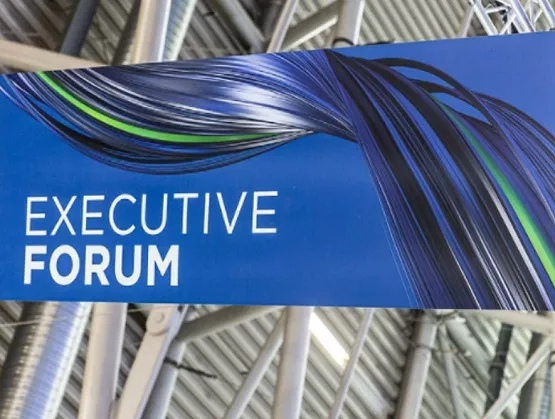
The SEMICON Sprint to 2022 was off to a fantastic start with more than 4,000 participants convened in person at the four-day SEMICON Europa Expo in Munich, November 16-19. Attendees gathered at the Executive Forum for insights into the latest trends in the semiconductor industry and heartily welcomed the long-awaited return to in-person networking.
With semiconductor sales expected to double to $1.2 trillion USD in the next 10 years, the microelectronics industry must address critical challenges – rising geopolitical trade tensions, countries pursuing chip supremacy ahead of global supply chain collaboration, and talent shortfalls – noted Ajit Manocha, president and CEO of SEMI, during his opening remarks. He reinforced the integral importance of semiconductor innovation to a sustainable industry and society.
Following are key takeaways from the forum.
Overcome Disruption and Build on Europe’s Strengths Through Collaboration and Strategic Partnerships
A new wave of disruption is emerging – the deeptech wave – which builds on the convergence of technologies such as AI, material science, biology, and semiconductors to disrupt virtually every aspect of life. Luc Van den hove, president and CEO of imec, presented a compelling case on how to overcome the formidable challenges of 5th-wave disruptive innovation by building on European strengths in equipment and manufacturing and its leadership in secure IP and technology while both expanding and tightening a much broader array of partnerships. While Sebastien Dauve, CEO of CEA-Leti, said that more investment in ICT research and innovation, especially in memory development, will be critical to address looming design challenges in areas such as energy efficiency and sustainable electronics.
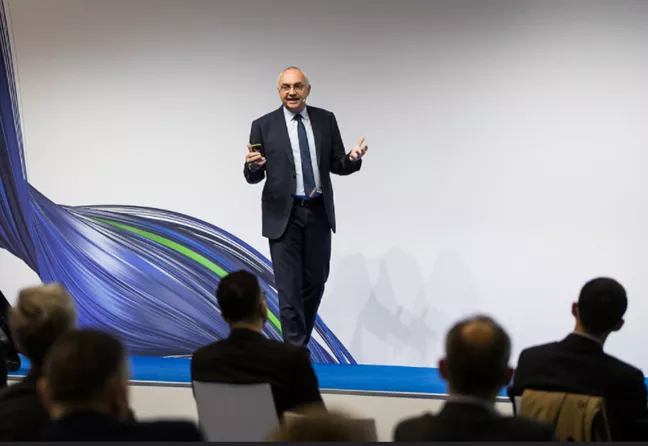
Luc Van den hove, President and CEO of imec
Europe’s leadership in semiconductor research; semiconductors for automotive, IoT, MS/RF, sensors, and power electronics; semiconductor manufacturing equipment and materials; and mobile network equipment has always been powered by collaborative innovation, said Dr. Ann Keller, EVP and General Manager Technology Development at Intel Corporation. Keller noted that for Europe to maintain that leadership, strategic partnerships will become increasingly important moving forward. She also stressed that, now more than ever before, the world economy is more dependent on a stable semiconductor supply and a cohesive semiconductor industry.
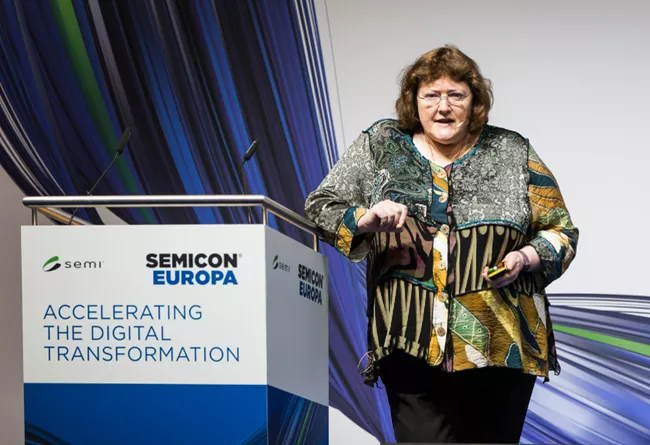
Dr. Ann Keller, EVP and General Manager Technology Development at Intel Corporation
Christoph Kutter, Executive Director of Fraunhofer EMFT, said that Europe must extend collaborations along the value chain and throughout the region to build key strengths in application-specific microelectronics design and manufacturing to bolster its global position.
Production Investments Should Focus on Regional Strengths, Skills, and Carbon Neutrality
The last five years have witnessed a surge in investment in European manufacturing facilities - most notably, Infineon, Bosch, and Intel. Recently, and in addition to prior investments, Intel has announced plans to invest €80 billion EUR in manufacturing facilities across Europe over the next 10 years.
Growing production in Europe is critical to strengthening the region’s global position and mitigating potential supply-demand issues in the future. Europe stands at a crossroads in semiconductor manufacturing, facing the largest imbalance between chip production and consumption in its history even as it has set the goal to capture 20% share of global chip manufacturing. According to Sabine Herlitschka, CEO and CTO of Infineon Technologies Austria AG, Europe-based production facilities should focus their investments more on the region’s core strengths, skills training, and ways to become carbon neutral.
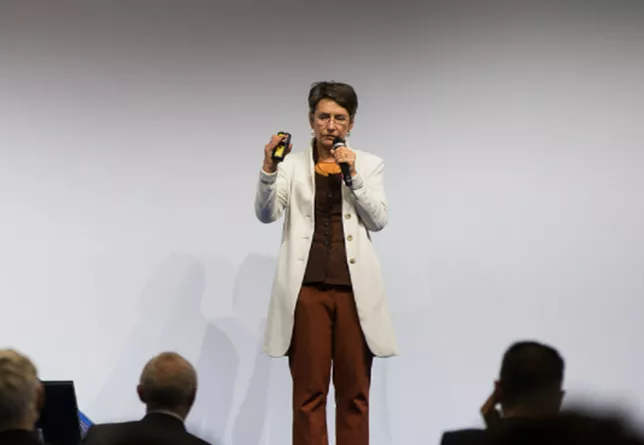
Sabine Herlitschka, CEO and CTO of Infineon Technologies Austria AG
Sustainability is a Team Effort and Should be Embedded Throughout Operations
Kate Wilson, president of the Semiconductor Division at Edwards Vacuum, urged participants to “get on board across the board” in creating a more sustainable semiconductor industry — one that meets net zero carbon emissions to help keep the planet from warming beyond 1.5 degrees (Celsius) by 2050.
“We can only reduce our carbon footprint, tackle climate change, and achieve environmental sustainability through active collaboration with each other and governments around the world,” Wilson said. She explained that a holistic approach to carbon neutrality should extend along the semiconductor supply, manufacturing, and distribution chain, and include science-based targets.
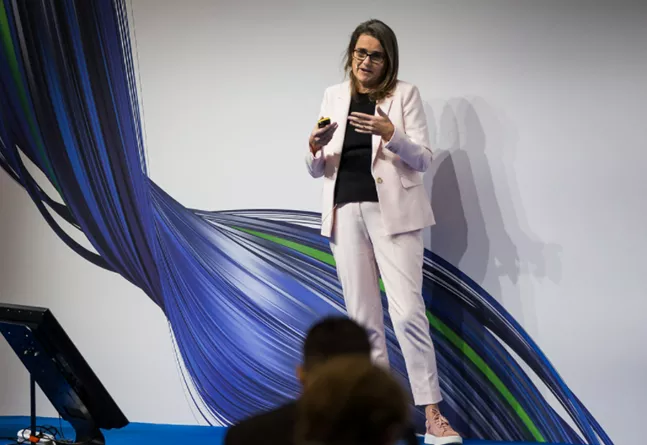
Kate Wilson, President of the Semiconductor Division of Edwards Vacuum
In the healthcare industry, Merck has identified three primary areas to embed sustainability throughout its operations. Petra Wicklandt, Senior Vice President and Head of Corporate Sustainability, Quality and Trade Compliance at Merck KGaA Electronics, Darmstadt, Germany, presented the company’s three-pronged focus on sustainability innovation and technology: improve the well-being of more than one billion patients worldwide, integrate a sustainability-mindset across all value chains, and reach climate neutrality by reducing resource consumption.
Healthcare Innovations Require Next-Generation Semiconductor Technologies and Cross-Sector Collaboration
During his presentation on Accelerating Innovation for Smart Medical Devices, Ronald Dekker, Principal Scientist at Philips Research, noted that “the transition towards more decentralized and personalized healthcare is breaking down the borders among the Electronics Components and Systems (ECS), MedTech, and Pharma industries. As these borders fade, new medical domains are emerging that not only hold great promise for patients, but also for industry.”
From bioelectronic medicines to medical devices that treat chronic diseases, the healthcare industry offers an exciting abundance of new ideas and applications for semiconductor technology. This poses a significant opportunity for companies along the semiconductor value chain to grow their businesses while helping solve global healthcare challenges. However, as Dekker noted, progress toward new high-tech innovations that replace or complement traditional healthcare practices have progressed slowly because the number of use-specific innovations reliant on last-generation technology has been too low to stimulate new investment. He advocates for open technology platforms to accelerate innovation and collaboration among the ECS, MedTech and Pharma industries.
Accelerated Growth Through Data Innovation, Enabled by Manufacturing Excellence and Integration
In his presentation Accelerating the Secure Intelligent Edge, Executive VP and CTO at NXP Semiconductors, Lars Reger, dove deep into how to better manage oncoming data floods. “The trend to reach more than 75 billion connected devices by 2030 is driving the need for a move from the cloud to the secure edge in multiple applications which, with machine learning, is an essential component of advanced capabilities and energy efficiency,” he explained. There’s a big opportunity in big data, particularly for European companies with strengths in many of the application areas moving to the secure edge – and it’s through such big data innovations that the industry can collectively accelerate digital transformation.
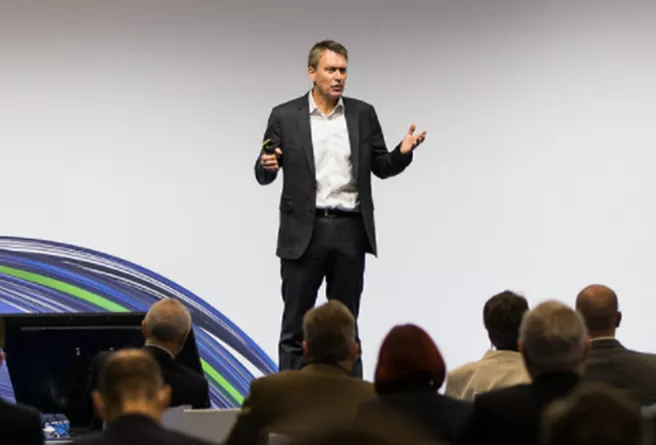
Lars Reger, Executive VP and CTO at NXP Semiconductors
Maria Marced, President of TSMC Europe, noted that advanced capabilities made possible by AI, big data, IoT, 5G, and semiconductors are accelerating growth of today’s mega trends in smart and connected cities, industries, and homes. The continuation of unprecedented demand for such computing and communications technologies – augmented by advanced fab technology, sustainable manufacturing excellence, and innovations beyond the chip level to system-wide levels – will lead to “new applications and services that realize our dreams” in a smarter, more connected, and digitized world.
Oreste Donzella, Executive Vice President at KLA, echoed the notion that the European semiconductor industry must innovate beyond the chip level and added that the long-term expansion of its semiconductor industry also hinges on scaling new innovative approaches as chips become more complex. “As we address the exciting, continuing, and long-term expansion of the semiconductor industry and its multiple markets, the complex challenges involved will require both scaling and innovative practices in areas like advanced packaging,” he said.
Capping the Executive Forum, Axel Fischer, VP Foundry Business EMEA at Samsung Semiconductor Europe GmbH, described the semiconductor industry as “on the move” entering the era of data traffic and infrastructure, requiring vast amounts of processing power. He noted that 5G, mobile, high-performance computing and AI applications will drive the growth of today’s $100 billion USD foundry sector, which must rely more on heterogeneous integration to help reduce development time and costs.
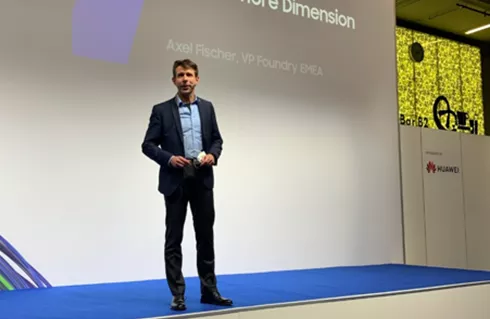
Axel Fischer, VP Foundry Business EMEA at Samsung Semiconductor Europe GmbH
The Opportunities are Many – in Healthcare, Data and Computing, Security, Automotive, Sustainability
Laith Altimime, President of SEMI Europe, remarked that “Semiconductors kept the world economy engine running during the pandemic, and COVID has accelerated digital transformation, flagging both challenges and opportunities. Europe and its ecosystem are strategically well positioned to meet these challenges and remain at the forefront of digital transformation with its established strengths of collaboration and cooperation.”
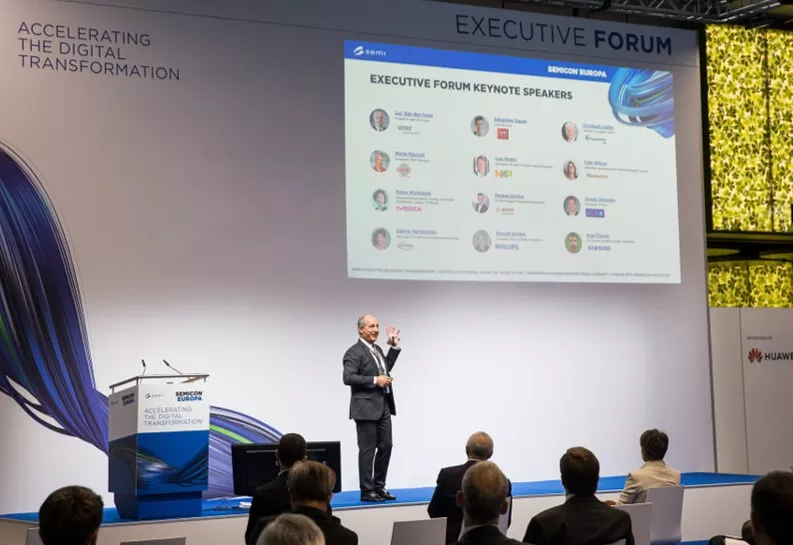
Laith Altimime, President of SEMI Europe
Overcoming Chip Industry Challenges and Capitalizing on Opportunities
The European semiconductor industry won’t be positioned to fully seize opportunities unless its extended ecosystem collaborates more closely and transparently to overcome roadblocks to innovation complexity and integration, chip shortages, supply chain disruptions, environmental and social sustainability requirements, cybersecurity, and an expanding diversity of applications, especially in Europe-focused markets like healthcare and automotive.
SEMI plays a critical role in encouraging collaboration along the $2.5 trillion USD electronics supply chain and enabling cooperation and advocacy in key areas – such as sustainability, diversity, and workforce development. Europe can – and must – build on its current strengths, and continue to encourage public and private investment, evidenced by recent advanced fab investments, required for a secure economy and society.
The SEMICON Sprint to 2022 Continues
Next up on the SEMICON Sprint to 2022 is SEMICON West 2021 Hybrid, December 7-9 in San Francisco. For those not attending in person, it is not too late to register for the virtual program to hear from keynote speakers and panelists.
Cassandra Melvin is the Director of Operations and Business Development at SEMI Europe.